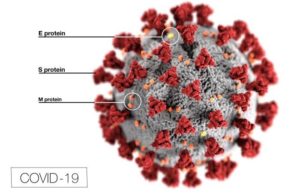April 9, 2020
Richard Pilch
This article is part of World War “V”: The COVID-19 Pandemic, a collection of all CNS COVID-19-related articles.
On March 31, 2020, Newsweek published an article entitled “What is a Wet Market? Calls for Crackdown on Selling Live Animals Amid Coronavirus Pandemic,”[1] which reiterates the widely held belief that closing wet markets will prevent future pandemics like COVID-19.[2] Our assessment is that this approach only addresses part of the problem – to effectively mitigate the risk of live animal markets, we must address both supply and demand.

Wholesale market photo (Src: Peter Griffin, needpix.com)
The term “left-of-launch” is commonly used in the defense arena to describe efforts that preemptively address a threat, such as an enemy missile launch, before it happens. We should employ a similar “left-of-launch” approach to infectious disease threats like COVID-19.
Large-scale outbreaks like the one we are currently experiencing commonly originate at the wildlife-human interface, including live animal markets where infected animals and the viruses they carry are exposed to crowds of humans. This was the case in China with H5N1 and H7N9 influenza as well as with SARS, and in Africa with Ebola outbreaks linked to the practice of consuming wild animals. The supply side of the problem is the markets where infected animals or their remnants are sold. The demand side of the problem is the people who shop there.
Nations have attempted to address the supply side of the problem on multiple occasions in the past. After SARS, China closed live animal markets and banned wildlife shipments. After the 2014-2015 West Africa Ebola outbreak, affected countries introduced wildlife hunting and consumption bans. In both cases, unregulated “black” markets for wildlife trade and purchase emerged. Now, COVID-19 has led to another round of market closures and wildlife trade and consumption bans in China. Should we expect a different outcome?
The answer is no, because these efforts address only half of the problem. If we want to get serious about preventing future outbreaks that resemble COVID-19, we must address demand as well. This involves raising public awareness; offering affordable alternatives to live animal markets; and promoting good hygienic practices among shoppers and workers, including hand-washing, proper cooking of raw meat, and surface disinfection. It involves changing the public mindset.
It is a challenging task, but COVID-19 presents an opportunity that must be exploited. Research has consistently demonstrated that disasters like COVID-19 lead to both increased risk aversion and enhanced cooperation in affected populations. Risk perception in China and around the world may be at an all-time high, not just with respect to the personal risk related to shopping at live animal markets but to the risk to family members and friends as well. And China has signaled a willingness to cooperate, for example by its rapid sharing of SARS-CoV-2 genomic sequences in order to facilitate medical countermeasure development in the U.S. and internationally.
If COVID-19 has demonstrated nothing else, it is that we are a global community. An outbreak in any corner of the world has the potential to affect us all. We need a consensus approach to addressing the human behaviors and cultural practices that lead to such outbreaks. Only together can we prevent the next COVID-19.
Dr. Richard Pilch is Director of the Chemical and Biological Weapons Nonproliferation Program, James Martin Center for Nonproliferation Studies, Middlebury Institute of International Studies at Monterey.
See Also
 World War “V”: The COVID-19 Pandemic
World War “V”: The COVID-19 Pandemic
A collection of all CNS COVID-19-related articles
NOTES
[1] https://www.newsweek.com/what-wet-market-amid-pandemic-crackdown-called-selling-live-animals-china-1495278[2] See, for example, Zhang and Holmes. A Genomic Perspective on the Origin and Emergence of SARS-CoV-2. Cell. March 26, 2020. https://doi.org/10.1016/j.cell.2020.03.035
